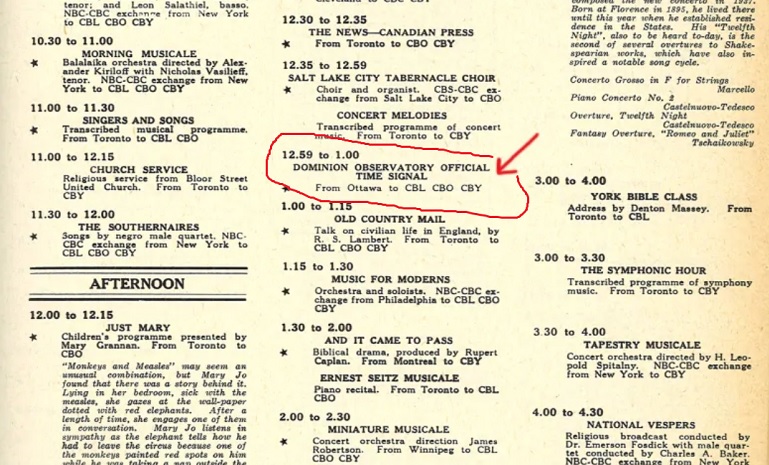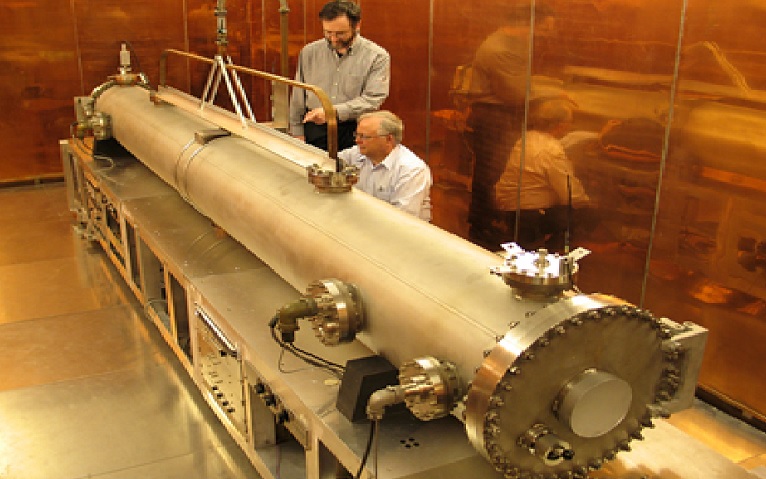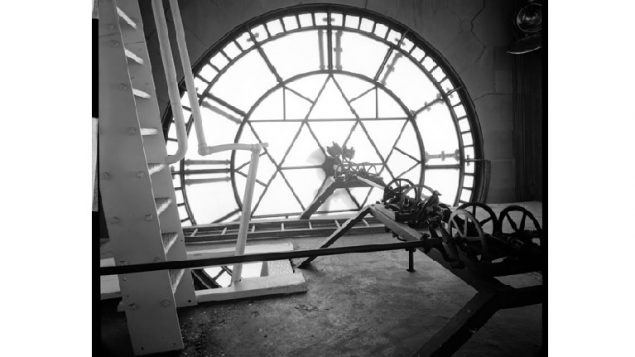It was on this day that Canada’s longest running, and shortest radio broadcast began.
It’s the official time signal from the National Research Council (NRC) broadcast on the public radio network ever since, with other networks sometime joining in.
The broadcasts last about 30 seconds, although usually much shorter now. Originally with an announcer saying “Now, the National Research Council time signal. The beginning of the long dash following ten seconds of silence indicates exactly one o’clock, Eastern Standard Time, (month) (date) (year)” except the long silence is now gone.

A portion of the printed CBC radio broadcast schedule for Ontario, for Sunday Nov 5, 1939
While official time signals had begun as far back as 1923 when astronomers at the the Dominion Radio Astrophysical Observatory created a shortwave time signal radio station. Regular daytime transmission began in January. In order to cover Canada in its entirety, the station automatically sent its call sign in Morse code once per hour and pulses were coded to identify the time of day.
The radio call letters CHU were first used for Canadian time transmission on the frequencies 3330 kHz, 7335 (7850 since 2009) kHz and 14670 kHz starting in 1938.
But on this date in 1939 the daily signal was begun on the CBC public broadcaster AM radio network across the country. It now continues its 80 years of uninterrupted broadcasts on CBC radio.

An atomic clock at the NRC, in a carefully climate controlled, all copper-clad room. (NRC)
For decades the Dominion Observatory time signal was an important as most people used wind up watches and clocks, and for appointments, train and other schedules, it was important to readjust them to ensure accuracy. This was even more important as Canada had already entered the Second World War, and massive amounts of personnel and materiel were being shipped around the country and internationally.
Initially the scientists at the Dominion Observatory in Ottawa would take astronomical measurements and combine that with a state of the (at the time) pendulum clock and together accuracy was within one second. Since the 1950’s a cesium atomic clock has been used, and the service transferred to the National Research Council.
Eventually as electronics began to enter the radio system, the ten seconds of silence had to be done away with as the equipment interpreted the silence as a technical problem and react with backups.
Even though people have digital timepieces, smart devices and other automatically adjusted cell phones, the time signal is such a part of Canadian culture that it’s unlikely it would be done away with as “redundant” in the foreseeable future.
Additional information-sources







For reasons beyond our control, and for an undetermined period of time, our comment section is now closed. However, our social networks remain open to your contributions.